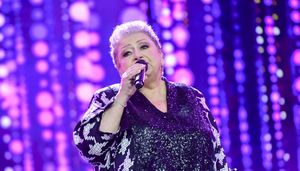The Toronto Raptors have successfully acquired Brandon Ingram from the New Orleans Pelicans, marking a pivotal moment as the NBA trade deadline approaches. The deal, initially reported by several media outlets, including ESPN and The Canadian Press, has sparked interest and debate among basketball fans and analysts alike.
According to reports, the Pelicans are sending the former All-Star forward to Toronto in exchange for three key assets: guard Bruce Brown, center Kelly Olynyk, and two draft picks, one being a protected first-round pick for 2026. This trade signals not just tactical changes, but significant shifts for both franchises as they recalibrate for the future.
Since being drafted second overall in the 2016 NBA draft, Brandon has experienced both highs and lows with the Pelicans. He was once seen as part of the team's core alongside Zion Williamson, having been named to the All-Star team and becoming the focal point after the Anthony Davis trade. Yet, injuries had consistently hampered his contributions, with his last game played on December 7, 2024, due to a sprained ankle. Despite this, his performance stats have demonstrated his scoring potential—averaging 22.2 points, 5.6 rebounds, and 5.2 assists over his current season.
The Raptors, holding onto aspirations of becoming competitive sooner than later, are betting on Brandon's scoring abilities to rejuvenate their lineup. Despite their current 16-35 record, the Raptors envision him playing alongside young talents like Scottie Barnes, RJ Barrett, and the newly acquired Immanuel Quickley. This new addition enhances their offensive capabilities and introduces another scoring threat, especially with his capacity for mid-range shooting.
Conversely, the Pelicans have navigated through significant injury struggles this season, leaving them with limited options, which prompted them to pursue a new direction. Financial factors played a role as well, with the team desiring to create more cap flexibility and alleviate upcoming contract concerns. Losing Bruce Brown and Olynyk—each with their own impressive track records—highlights how New Orleans restructured their priorities to adapt for rebuilding.
The financial aspect is worth noting; Brandon, set to become an unrestricted free agent by the end of the season, is anticipated to demand big contract negotiations. With Toronto already committed to substantial salaries for their key players, this presents potential complications for the Raptors as they balance their budget against Brandon's expected financial demand.
Meanwhile, within the league, many fans and analysts are examining each team's future beyond the trade. The Raptors are hoping the addition of Brandon bolsters their competitiveness, providing scoring and playmaking capabilities, which will guide the team away from the bottom of the Eastern Conference standings. Conversely, the Pelicans gather assets to strategically plan for what is forecasted to be one of the strongest NBA drafts and build for future seasons.
The contrasting trajectories of each side highlight the dynamic nature of modern NBA trades. Toronto's acquisition indicates their intent to win now, capitalizing on the abilities of established players, as they look to evolve from the effects of their recent rebuild. The configuration with Brandon invigorates their offensive strategy, potentially aligning well with their existing young talent.
For New Orleans, parting with Brandon signals the end of one era. Despite his remarkable skills, recurring injuries and inconsistencies meant the dynamics for both him and Williamson didn't culminate as anticipated. Nevertheless, the foundation built on the draft capital they received may lead to promising future opportunities.
The addition of Brandon not only changes the Raptors' roster but also sends ripples across the league as both franchises adjust their aspirations. With the NBA trade deadline looming, teams and fans alike are eager to see how these moves will redefine the competitive balance.



